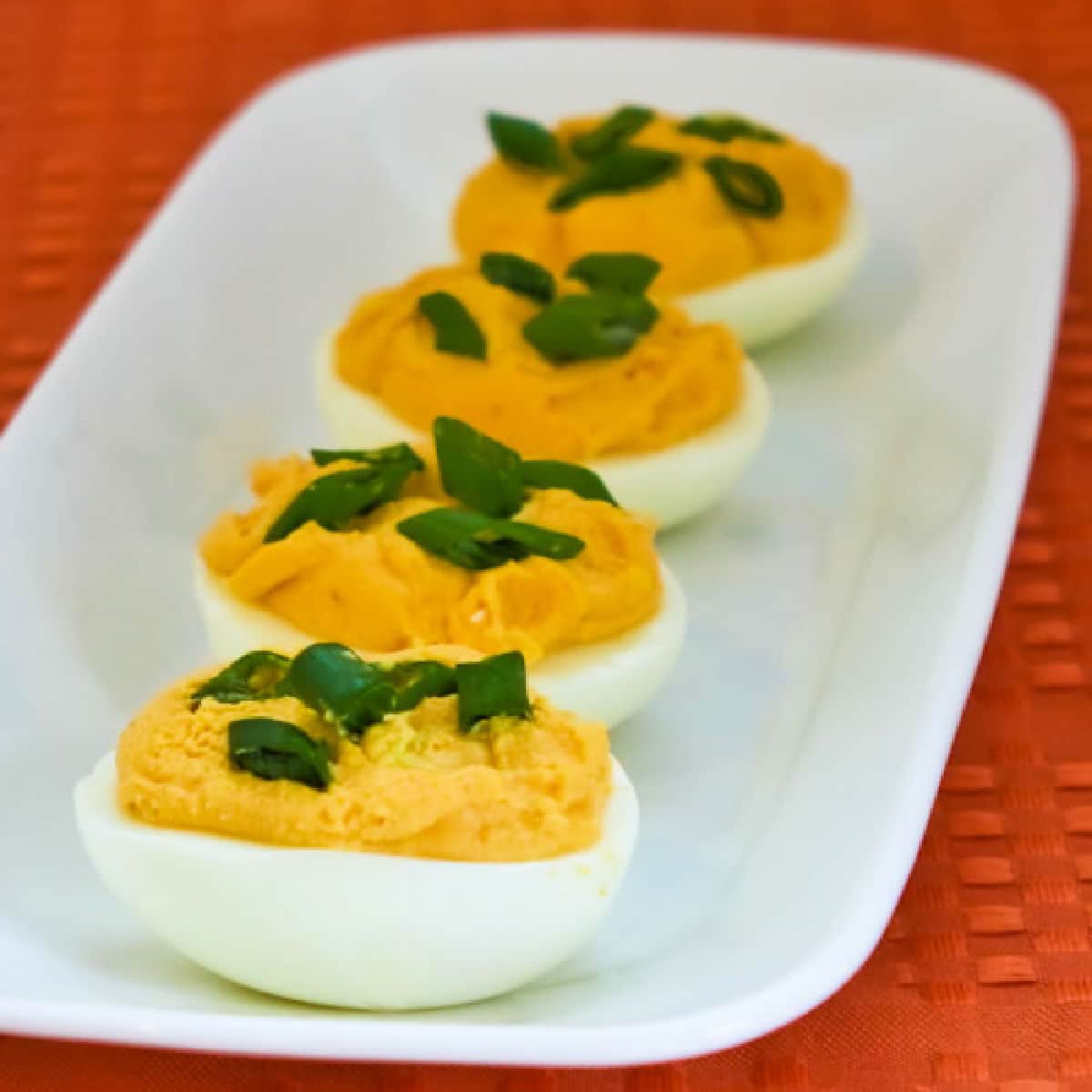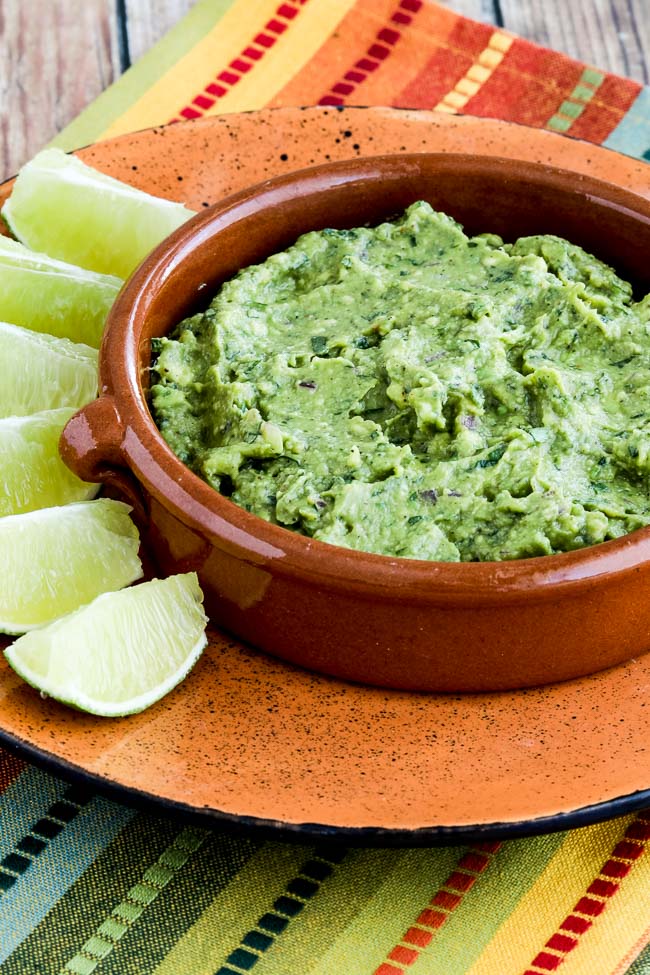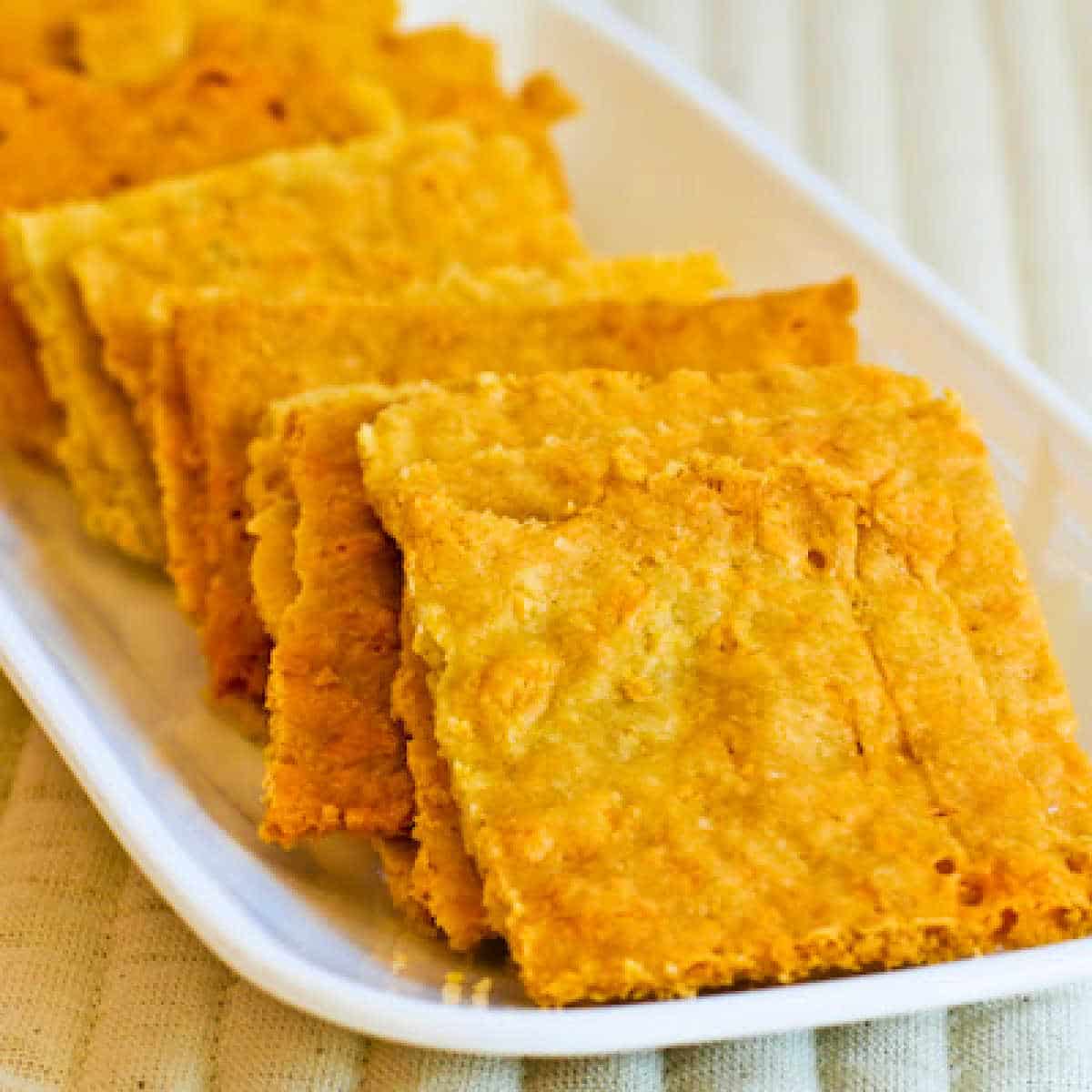Looking for a good paleo pizza crust recipe? This is it! I’ve experimented with a few versions and this crust is the nicest I’ve made. It’s crispy and a little chewy, just like the real thin crust pizza should be. You can use this recipe to make mini pizzas as I did or create traditional large round or square versions.
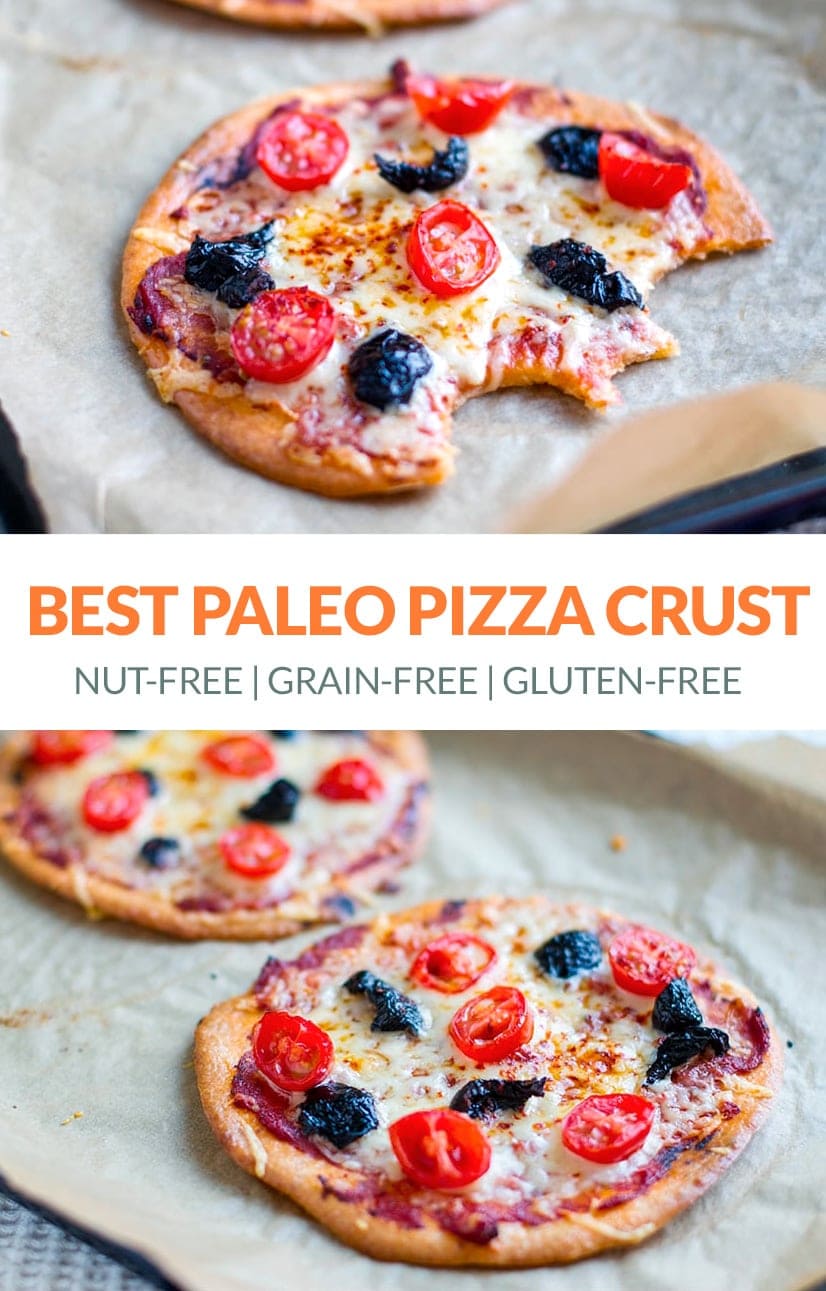
This paleo pizza crust recipe is slightly unconventional but hey, nothing is conventional about the paleo diet. The crust is grain-free and also nut-free so you can use it to make little pizzas for kids’ lunch boxes. I used cheese on mine because I can tolerate it, but feel free to omit it. I’ve provided some nice topping ideas below.
How To Make Paleo Pizza Crust
As you’re making the pizza crust, you will be wondering if it’s actually going to work because there is no kneading of the dough. Well, this is a slightly different kind of crust. Follow the instructions in the recipe below and it should work.
Dry Ingredients
For this recipe, I am using grain-free and tree nut-free flours. One part is tapioca or cassava flour. Tapioca flour is a little finer and that’s what I used for the mini pizza crusts in the pictures and it can be found in most supermarkets and health food stores. Cassava flour (very similar but not as fine) would probably be even better!
Coconut flour can be found in most health food stores and online as well. If unavailable, replace it with white rice flour, quinoa or buckwheat flour if tolerated, or almond meal. In this case, use a little more than is specified for coconut flour.
Dairy-Free Version
Use ghee instead of butter, or around 2.5 tablespoons of olive oil or coconut oil should also work. For the toppings, omit the cheese or use aged Parmesan or sheep’s milk cheese if that is less problematic than cheddar or mozzarella.
Keep in mind that pizza is a sort of a treat! Whether it’s grain-free or not, it’s still pretty high in carbohydrates and should be enjoyed in moderation and with loads of veggies on the side. Serve with a crisp green salad, such as gem/cos lettuce or rocket with lemon, mustard and olive oil dressing
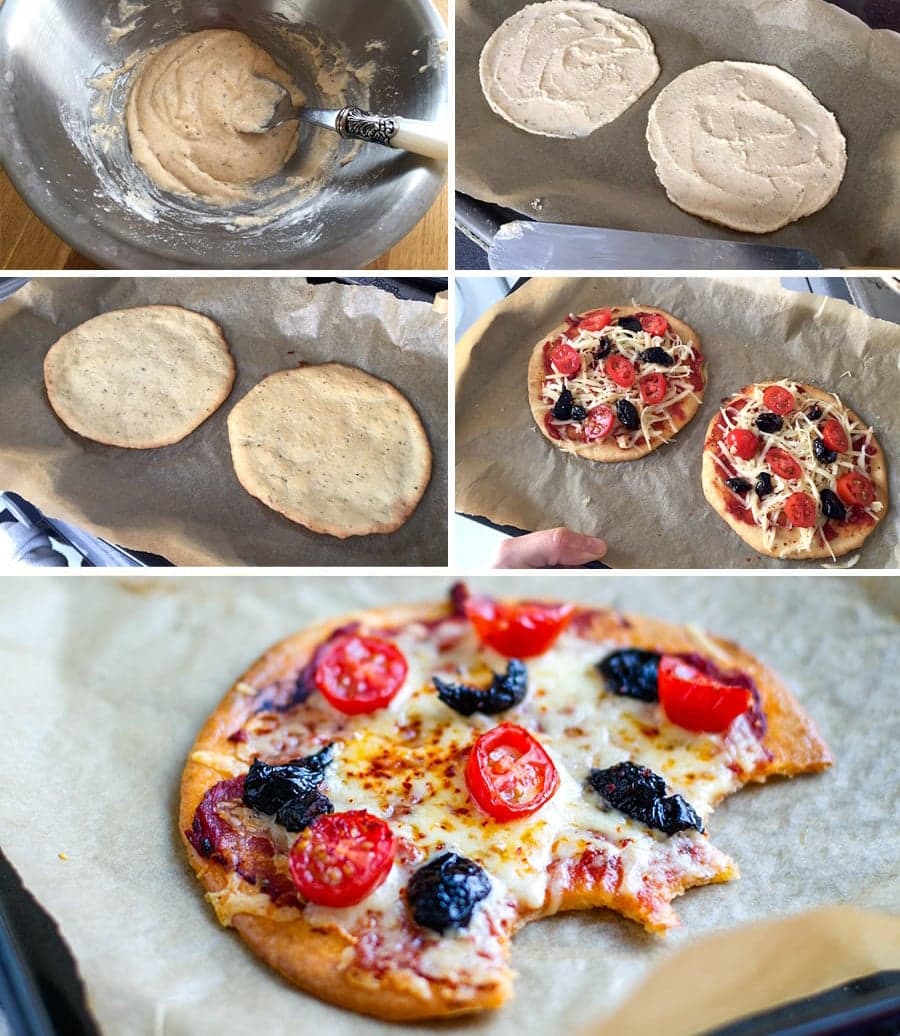
What Is The Texture Of This Pizza Crust?
The texture won’t be quite the same as a regular pizza but it’s a pretty decent grain-free and paleo alternative that really satisfies. It’s thin, crispy and a little chewy. Once you’ve mastered this basic recipe, you can experiment with different toppings or try making a larger size pizza.
Paleo Pizza Topping Ideas
- Tomato base, good quality ham or pancetta and pineapple.
- Tomato base, caramelised onions, pan-fried mushrooms and radicchio.
- Tomato base, salami, olives and Spanish onion.
- Tomato base, rosemary roasted pumpkin and chorizo.
- If you eat dairy: tomato base and Parmesan cheese or mozzarella, with fresh prosciutto and rocket on top.
- Artichoke dip/pesto base with mushrooms and ham for an AIP pizza.
Let me know what you think of this pizza crust or if you have any questions in the comments.
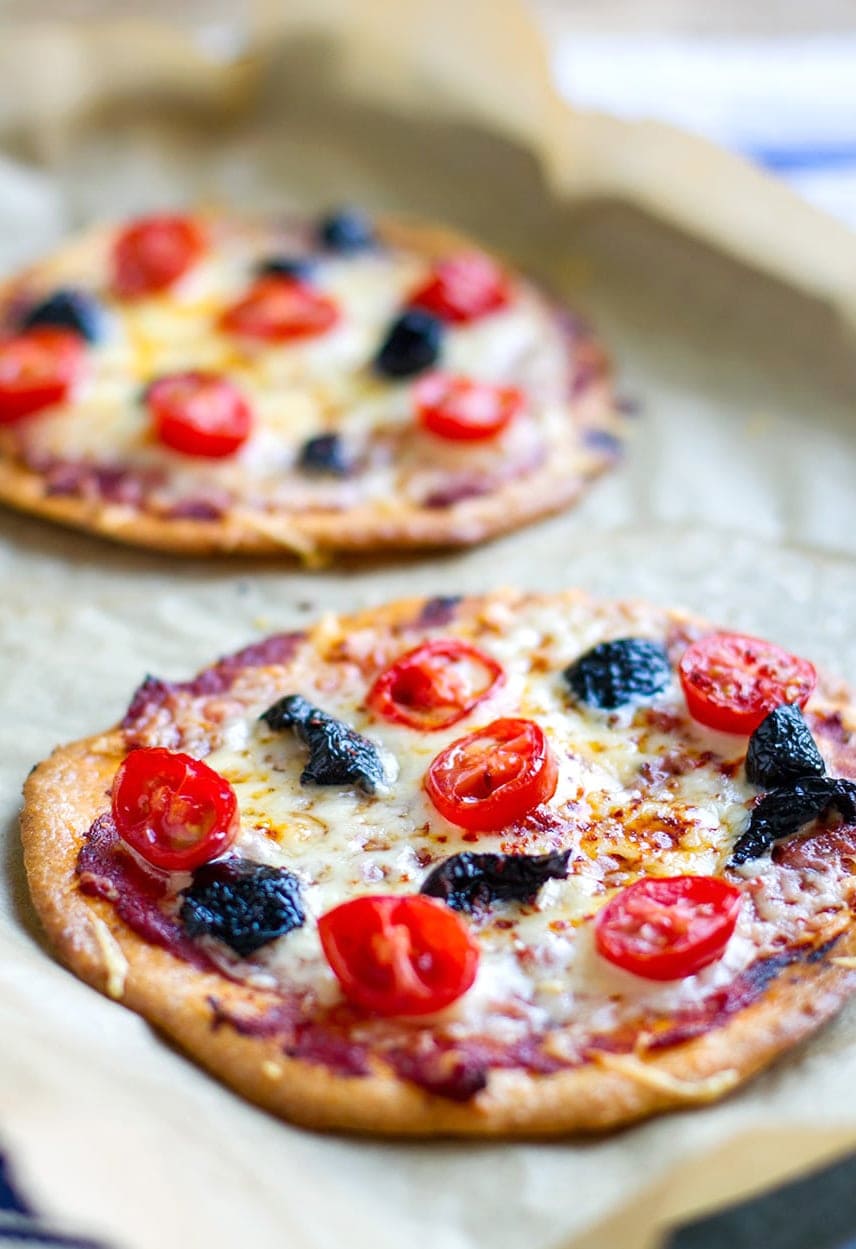
What Readers Are Saying About My Paleo Pizza Crust
This is a WONDERFUL recipe! We’d been missing pizza since going paleo a few months ago, and this took care of the craving. Especially, since we learned that we can have some goat or sheep’s milk cheese on this program; we added dollops of soft goat’s cheese to the mini-pizzas. I really appreciate the detailed steps and hints. I’ll be making this every week! Yum!
I did have to use the arrowroot flour vs the tapioca. I have a bad reaction to the tapioca. It was still great! Thank you. The best crisp bottom. – Shauna
Description
This is a simple and nut-free recipe for a delicious, thin, crispy and a little chewy paleo pizza crust. You can make small or large pizzas and use whatever toppings you like following this base recipe.
- Preheat the oven to 250 C / 480 F.
- In a medium bowl, whisk together the eggs with melted (but not hot) butter or ghee, seasoning and water, until fluffy. If using olive oil, no need to warm it up.
- Then add the tapioca flour and coconut flour and mix through well. You should have a thick batter consistency, think muffin batter. If it’s not as thick as in the pics, add a little more of either of the flours.
- Place a sheet of parchment paper on a flat oven tray (no need to grease). Depending on the size of the tray, you might have to pre-cook the bases in two batches or use two trays in the oven at the same time.
- Depending on how many you can fit, scoop 2 or 4 dollops of batter on to the tray. I used about 2-3 tablespoons of batter per pizza base. Leave enough space around each dollop to flatten it into a thin round pizza base.
- Using a knife spatula or a the back of the spoon, flatten each dollop into a flat, thin pancake (more like a thick crepe). Use a circular motion to spread the batter, don’t worry if it’s a little uneven as it will melt and flatten out slightly once in the oven. See image above.
- Make sure the oven is hot when you put the bases in. Place the tray on the middle shelf and bake for 7-8 minutes, until lightly browned. If using two trays, you might need to rotate them from top to bottom as the oven temperature can vary. Allow a little more time in this case. Otherwise, repeat with the second batch if needed.
- Once slightly golden brown, remove the bases from oven and add the toppings.
- While the bases are baking, mix together the tomato paste, olive oil and dried oregano in a bowl.
- Spread a teaspoon or so over each pre-cooked base. Top with a few tablespoons of cheese, grate more if needed, a few slices of tomatoes and sliced olives. Sprinkle with some chilli flakes if you wish. Reduce the heat of the oven to 200 C / 400 F and pop the pizzas back in for about 5-6 minutes, until the cheese has melted and browned lightly.
- The bases should easily slide off the parchment paper. If not, slide a spatula or a knife underneath to let them loosen up. Serve with a crisp green salad.
Notes
Please note, the nutritional breakdown below is for 1 mini pizza with the toppings I used in the recipe, cheese including.
Nutrition
- Serving Size: 1 mini pizza
- Calories: 414
- Sugar: 4.7 g
- Sodium: 599.8 mg
- Fat: 28.8 g
- Saturated Fat: 13 g
- Carbohydrates: 28.8 g
- Fiber: 4.7 g
- Protein: 12.7 g
- Cholesterol: 142.5 mg













